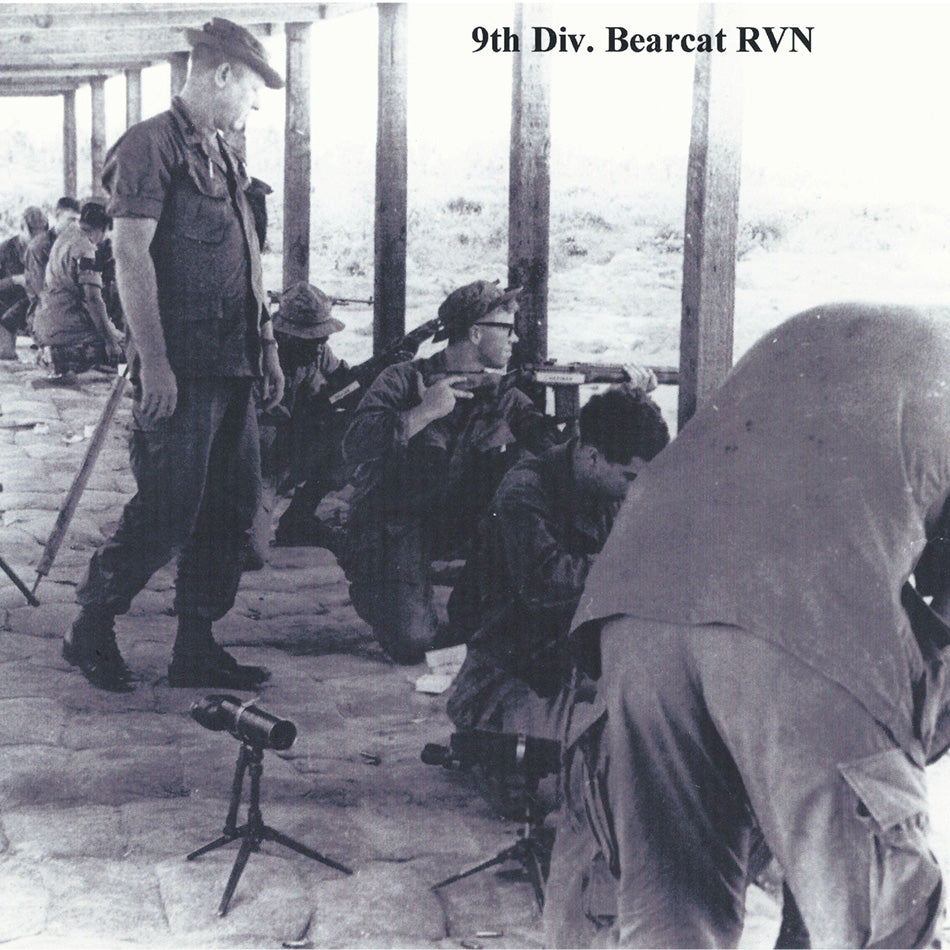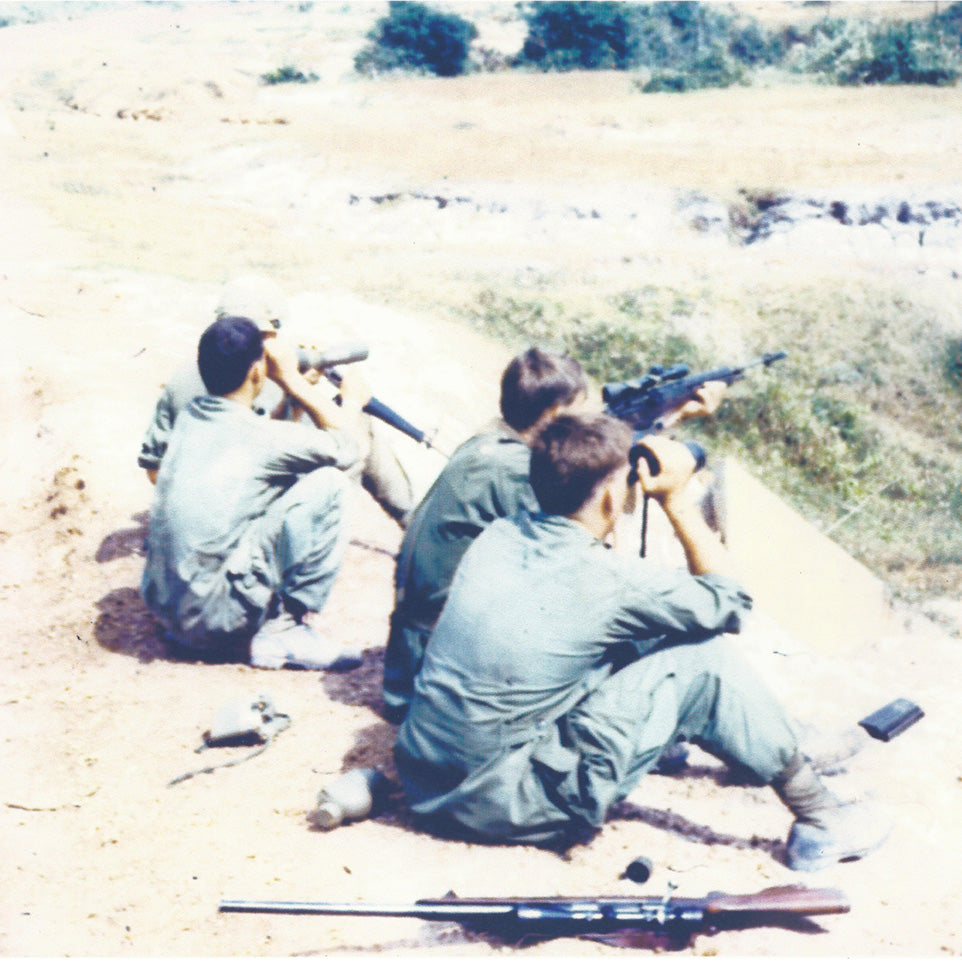The genesis of ART scope technology can be traced back to the early years of the Vietnam War, born out of the urgent need to counter enemy snipers who posed a grave threat to American servicemen. At the time, the
US Army found itself ill-equipped to effectively address this pressing issue.
To tackle this challenge, a strategy emerged: expedite the deployment of newly trained snipers to the battlefield. Yet, the prevailing sniper training methods of that era were time-intensive, demanding extensive
hours on the firing range to instruct recruits in skills such as distance estimation and mastering the art of "hold-over."
Enter Second Lieutenant James M. Leatherwood in the late 1960s. Armed with his recently patented design for a ranging scope, he introduced a novel concept: a scope that could automatically compensate for bullet drop.
The genesis of ART scope technology can be traced back to the early years of the Vietnam War, born out of the urgent need to counter enemy snipers who posed a grave threat to American servicemen. At the time, the
US Army found itself ill-equipped to effectively address this pressing issue.
To tackle this challenge, a strategy emerged: expedite the deployment of newly trained snipers to the battlefield. Yet, the prevailing sniper training methods of that era were time-intensive, demanding extensive
hours on the firing range to instruct recruits in skills such as distance estimation and mastering the art of "hold-over."
Enter Second Lieutenant James M. Leatherwood in the late 1960s. Armed with his recently patented design for a ranging scope, he introduced a novel concept: a scope that could automatically compensate for bullet drop.
In short order, the Army outfitted their XM-21 rifles with the innovative Leatherwood scopes. The impact was profound. Suddenly, snipers could be trained rapidly to achieve precise first-round hits at distances of up to 900 meters, without the need for extensive time investment in distance estimation or mastering "hold-over."
This pivotal shift catapulted American snipers to a position of dominance on the Vietnam battlefield, establishing the ART scope system as a legendary asset.
Jim Leatherwood's unwavering commitment to durability and excellence culminated in the US Army adopting the ART II scope as the designated daylight optic for the XM-21 rifle platform.
In short order, the Army outfitted their XM-21 rifles with the innovative Leatherwood scopes. The impact was profound. Suddenly, snipers could be trained rapidly to achieve precise first-round hits at distances of up to 900 meters, without the need for extensive time investment in distance estimation or mastering "hold-over."
This pivotal shift catapulted American snipers to a position of dominance on the Vietnam battlefield, establishing the ART scope system as a legendary asset.
Jim Leatherwood's unwavering commitment to durability and excellence culminated in the US Army adopting the ART II scope as the designated daylight optic for the XM-21 rifle platform.
Leatherwood/Hi-Lux has had the privilege of talking to a number of U.S. Army Snipers who used the ART system.
We are grateful for their service and their willingness to share their stories with us.
Do you know anyone who has used the ART scope in the Vietnam War? We’d love to tell their story!
Contact us at info@hi-luxoptics.com
Leatherwood/Hi-Lux has had the privilege of talking to a number of U.S. Army Snipers who used the ART system.
We are grateful for their service and their willingness to share their stories with us.
Do you know anyone who has used the ART scope in the Vietnam War? We’d love to tell their story!
Contact us at info@hi-luxoptics.com
With the ART scope, snipers did not need to know the exact distance to the target for bullet drop compensation. Rather, snipers improved first round hit percentages by framing the target within the reticle. Once the target was framed within the reticle, the Leatherwood Auto Ranging Telescope had already compensated for the bullet drop.
This lead to the phrase “Frame, Aim, Fire!” Throughout the Vietnam War, several legendary snipers used the Leatherwood ART to great success in combating the guerrilla warfare tactics employed by the Viet Cong.
With the ART scope, snipers did not need to know the exact distance to the target for bullet drop compensation. Rather, snipers improved first round hit percentages by framing the target within the reticle. Once the target was framed within the reticle, the Leatherwood Auto Ranging Telescope had already compensated for the bullet drop.
This lead to the phrase “Frame, Aim, Fire!” Throughout the Vietnam War, several legendary snipers used the Leatherwood ART to great success in combating the guerrilla warfare tactics employed by the Viet Cong.
The Sniper School in Cha Rang Valley, Vietnam implemented a 3 week program to get prospective snipers familiarized with the XM-21 platform with optics. Every trainee here was assigned the Leatherwood Automatic Ranging Telescope for daytime optic and an AN/PVS-2 also known as the "Starlight" scope for night time use.
The Sniper School in Cha Rang Valley, Vietnam implemented a 3 week program to get prospective snipers familiarized with the XM-21 platform with optics. Every trainee here was assigned the Leatherwood Automatic Ranging Telescope for daytime optic and an AN/PVS-2 also known as the "Starlight" scope for night time use.
Rick Bernardi (101st Airborne) attended sniper school at Fort Campbell, Kentucky. He trained using the Automatic Ranging Telescope on the XM-21 rifle.
Rick Bernardi (101st Airborne) attended sniper school at Fort Campbell, Kentucky. He trained using the Automatic Ranging Telescope on the XM-21 rifle.
ART Scope Training Manual [DOWNLOAD]
ART Scope Quick Start Tutorial
Automatic vs Manual Mode Tutorial
Determining Cam Settings for Your ART Scope
Leatherwood ART Frame Aim Shoot Technique (FAST)
M1000-PRO Follow Along - "On the Ground" to "On Target"
ART Scope Training Manual [DOWNLOAD]
ART Scope Quick Start Tutorial
Automatic vs Manual Mode Tutorial
Determining Cam Settings for Your ART Scope
Leatherwood ART Frame Aim Shoot Technique (FAST)
M1000-PRO Follow Along - "On the Ground" to "On Target"
The Leatherwood ART M1000-PRO can automatically compensate for bullet trajectory from 200 yards to 1000 yards.
The Trajectory Cam is designed to work with modern flatter shooting calibers such as 6.5 Creedmoor.
The Leatherwood ART M1200-XLR can automatically compensate for bullet trajectory from 300 yards to 1200 yards.
This scope has a etched glass mil scale reticle.

